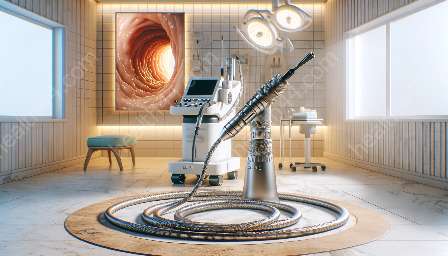Welcome to the world of rigid endoscopes, where precision, clarity, and reliability meet to drive innovation in endoscopy and medical equipment. Rigid endoscopes play a crucial role in medical procedures, offering exceptional visualization and maneuverability. Let's delve into the fascinating realm of rigid endoscopes and their vital role within the broader context of endoscopy and medical devices.
The Essence of Rigid Endoscopes
Rigid endoscopes are advanced optical instruments designed for visual examination or surgical procedures within the human body. They harness cutting-edge technology to provide high-quality imaging and visualization of internal organs and cavities. Unlike flexible endoscopes, the rigid design of these devices offers enhanced stability, precise control, and exceptional image clarity. This makes them indispensable tools for various medical specialties, including gastroenterology, urology, orthopedics, and otolaryngology.
Components of Rigid Endoscopes
The main components of a rigid endoscope include the optical system, light transmission system, and the rigid metal or plastic outer tube. The optical system consists of lenses, prisms, and a charge-coupled device (CCD) camera that captures and transmits high-definition images to an external monitor. Meanwhile, the light transmission system utilizes fiber optic bundles or miniature LED lights to illuminate the internal body cavities, ensuring clear visualization during procedures.
Applications in Endoscopy
Rigid endoscopes are employed in numerous endoscopic procedures to diagnose, visualize, and treat various medical conditions. In gastroenterology, they enable precise examination and interventions within the gastrointestinal tract, aiding in the detection and removal of polyps, tumors, and other abnormalities. Additionally, rigid endoscopes play a pivotal role in arthroscopy, allowing orthopedic surgeons to navigate and address joint-related issues with unparalleled accuracy and dexterity.
Advances in Rigid Endoscopy
Recent advancements in rigid endoscopy have led to the development of miniaturized, high-definition endoscopes, capable of capturing detailed images in confined spaces with minimal invasiveness. The integration of advanced imaging technologies, such as 3D visualization and enhanced image processing, has further enhanced the diagnostic and therapeutic capabilities of rigid endoscopes.
Integration with Medical Devices and Equipment
Rigid endoscopes seamlessly integrate with a diverse range of medical devices and equipment, including video processors, insufflators, and powered surgical instruments. This synergy enables medical professionals to perform complex procedures with precision and efficiency, ensuring optimal patient outcomes.
Future Outlook
As technology continues to evolve, the future of rigid endoscopes holds the promise of further miniaturization, improved ergonomics, and enhanced imaging modalities. These advancements will empower healthcare providers to achieve greater diagnostic accuracy and deliver advanced therapeutic interventions, ultimately shaping the landscape of endoscopy and medical devices.


